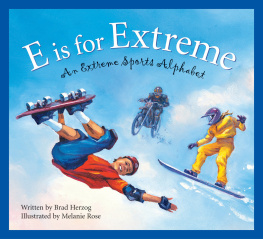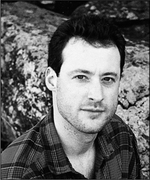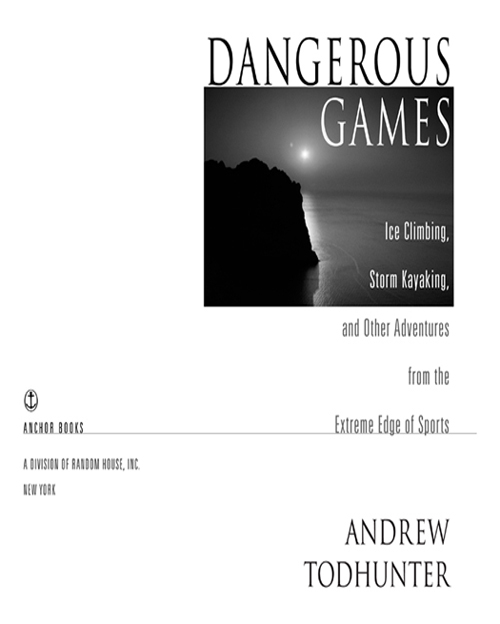Andrew Todhunter lives in Northern California.
He is also author of Fall of the Phantom Lord.
All rights reserved under International and Pan-American Copyright Conventions. Published in the United States by Anchor Books, a division of Random House, Inc., New York, and simultaneously in Canada by Random House of Canada Limited, Toronto. Originally published in hardcover in the United States by Doubleday, a division of Random House, Inc., New York, in 2000.
Anchor Books and colophon are registered trademarks of Random House, Inc.
Some of these stories were first published as follows: A version of The Seam first appeared in the September 2000 issue of National Geographic Adventure. Reprinted with permission of National Geographic. The Last Voyage of Steve Sinclair combines two articles: Gale Force Kayaking in the August 1995 issue of The Atlantic Monthly and Paddling Out: The Last Voyage of Steve Sinclair in the August 1996 issue of Sea Kayaker. Beneath the Ice first appeared in the January 1994 issue of The Atlantic Monthly. Dark Passage first appeared in the July 1998 issue of The Atlantic Monthly. The Precipitous World of Dan Osman first appeared in the January 1996 issue of The Atlantic Monthly. Stillwater first appeared as Incident at Stillwater in the October 1995 issue of Mens Journal. The Wreck of the Belle first appeared as Diving into the Wreck in the July/August 1996 issue of Preservation, the magazine of the National Trust for Historic Preservation. The Taming of the Saw first appeared in the January 1995 issue of The Atlantic Monthly. On Cannon Cliff first appeared in the November 1999 issue of The Atlantic Monthly.
Title page photograph courtesy of PhotoDisc, Inc.
The Library of Congress has cataloged the Doubleday edition as follows: Todhunter, Andrew.
Dangerous games: ice climbing, storm kayaking, and other adventures from the extreme edge of sports / Andrew Todhunter.1st ed.
p. cm.
1. AthletesUnited StatesBiography. 2. Extreme sportsUnited States. 3. Risk-taking (Psychology) I. Title.
GV697.A1 T63 2000
796.092273dc21
[B]
99-087492
CONTENTS

THE SEAM

I n October of 1982, a twenty-seven-year-old British alpinist named Alex MacIntyre was killed by rock fall during a descent of the south face of Annapurna. Another British climber named John Porter was at base camp, watching the descent through his camera. MacIntyre and French alpinist Ren Ghilini were retreating after a failed attempt on the summit. They were down climbing, Porter describes, crossing a gully on a face that was the better part of ten thousand feet high. I lowered the camera to clean a speck of dust off the lens, and when I looked up again, Ren was alone on the face. MacIntyre had been struck and killed instantly by a single falling stone; his body tumbled to a ledge 500 feet below.
Nearly seventeen years later, Porter drives through the darkness north of Glasgow, Scotland. It is the middle of March, and were headed into the Scottish highlands for four days of ice and alpine climbing. Porter is preparing to write a biography of MacIntyre, and the events of 1982 have been much on his mind.
Porter was one of the finest mountaineers of his generation; MacIntyre, eight years younger, had been his protg. Classmates at Leeds University, they were also good friends. Porter, MacIntyre, and other British climbers of the so-called Leeds scene led a renaissance of British alpinism beginning in the late 1970s. Before expeditions, MacIntyres mother told Porter, Take care of my boy. Eventually, Porter says, MacIntyre outstripped his tutor. In MacIntyres obituary, Porter wrote, without envy but with a certain fraternal sadness, of the moment he realized that he had nothing more to offer; that his pupil had grown up and surpassed him. Around 1980, Reinhold Messner, arguably the greatest mountaineer of all time, lauded MacIntyre as the purest proponent of Himalayan superalpinism then at work. Messner was referring to a stylistic school of mountaineering that favors fast, light climbs by small teams or soloistsa style, born in the Alps, that Messner introduced to the Himalayas with spectacular results. Superalpinism is considerably more dangerous, and in part for that reason more aesthetic, than expedition-style mountaineering, which involves porters, Sherpas, fixed lines, high camps, and prolonged sieges of similar routes. Near the end of MacIntyres life, enflamed by such praise and his own promise, the young climber made a number of extraordinary climbs. He also began, as Porter says, to believe in his own legend. He began to break his own rules.
Porter was ill and unable to climb on the fatal day. In the days before his death, MacIntyre had expressed a specific fear of rock fall, for which the huge south face of Annapurna is notorious. After the accident, a blizzard prevented Porter and Ghilini from recovering the body. It was an awful decision to make, says Porter, to leave your friend lying there in the snow, but it was the only thing to do; it was something Alex would have understood. Soon after, Porter says, We raced back to Katmandu to face the world.
They didnt blame me, but I blamed myself, he continues. I thought, How come Im here? Did I crap out on him? Did I let him down? Was I a coward? Objectively, there was nothing more that Porter could have done.
Since his first climb in the New Hampshire hills at thirteen, Porter, now fifty-two, has avoided the limelight in a career spanning five continents and nearly forty years. As part of a British expedition, he attempted Everests west ridge in the winter of 1980. Among others, he helped establish major new routes on high-altitude peaks, including Bandaka, Chong Kun Dan, and Changabang.
As planned, Porter and I meet two other climbersBrian Hall and Tim Rhodesat Mary Fergusons Bed and Breakfast in the town of Aviemore, north of Scotlands Cairngorm Mountains. Both men met Porter at Leeds in the early 1970s. Like Porter, Hall went on to become one of the most respected high-altitude climbers of his time, with first ascents on Nuptse and Cerro Stanhardt, among others. Hall now runs an international mountain guiding company called Mountain Experience, based in Chinley, England. He also works as an equipment design consultant and photographer and will shoot photographs of the trip.
In the mid 70s, often with MacIntyre, Rhodes participated in a number of important first ascents in the Alps, including new routes on the north face of the Grandes Jorasses and Mont Blanc de Tacul. Later, he shifted his concentration to rock climbing and competitive running. A father of two, Rhodes now runs the Bridge End Bed and Breakfast with his wife in Hayfield, England.













